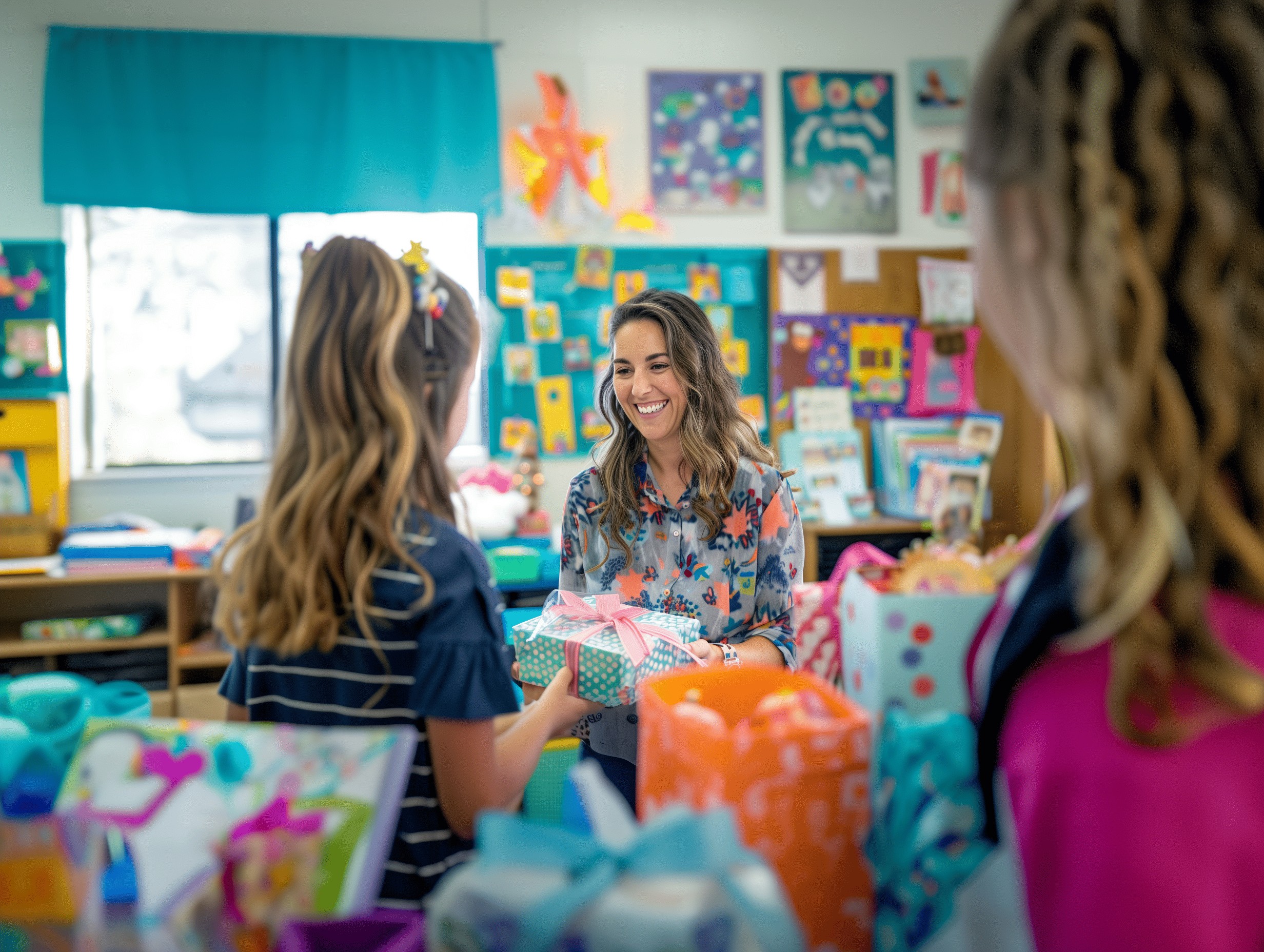KIMMIE'S KIDS
Mrs. Kimmie Tomlinson developed the "Kimmie's Kids" program at Lake City High
School. Subsequently, Educational Television (ETV) in South Carolina identified
this as a model safe schools program. ETV provided this tape segment, and we
gratefully acknowledge that contribution.
Questions for Thought:
1. Can students effect positive change? 2. How can the latent leadership ability
of students be brought out? I. Origins of "Kimmie's Kids"
- The Homecoming Fight
-
The Kimmie's Kids approach
- Seeking "Silent Leaders"
- The "Lock-In for Non-Violence"
- Post Lock-In activities
II. A Lock-In of Student Leaders
-
Theories and Practices
- Negative attitudes left outside
- Honesty and sharing
-
What Students Learned
- Everyone has problems
- Students can take responsibility
-
Lock-In Activities
- Role-play skits model conflict resolution
- "Full Pot" builds self-esteem
- Personal stories of violence in families
III. Beyond the Lock-In
- A non-violence club
- The club assembly
- The student body is challenged to practice non-violence
Kimmie's Kids Workshop Guidelines
1. Identify the "Silent Leaders" in your school. Use principals, teachers,
student government, and your own observation to help in preparing a list.
Include students from all social groups. Seek out the most dominant figures from
each group. 2. Invite these peer leaders to participate in a "Lock-In" to
discuss relationships, problem-solving, and non-violence. Provide a contract
agreement, which students sign to elicit positive participation. 3. Your meeting
place should be isolated from all distractions. Supply meals, restroom
arrangements, and "ice-breaking" items such as name tags. 4. Set the ground
rules for this "student conference":
-
All students must leave negative attitudes, pretensions, and "false fronts"
outside.
-
Encourage honesty by assuring students that all their opinions will be heard
and valued. No one will be allowed to attack or ridicule their ideas.
Negative personal comments should be banned.
5. A suggestion for "breaking the ice": Have students pair off. Let them spend
five minutes getting to know each other, then have each participant formally
introduce their partner to the group. (30 minutes) 6. Other small group
activities:
-
Encourage individuals to share personal stories of past mistakes, fears,
hopes. This helps them to see everyone as a person and open up more. (30
minutes to 1 1/2 hours)
-
Ask questions that allow students to look into each other's hearts and
minds. Encourage frank discussion of problems that need to be addressed,
breaking the tension occasionally with humor. Give each person plenty of
time to respond. (1 1/2 hours)
-
Discussion topics: (You select the topics) Include topics that are not often
talked about openly. Start with low-threat questions, advancing to more
high-threat questions. Everyone should answer, because the "quiet ones" may
hold back.
-
Relationships
- between classmates (freshmen/sophomores, etc.)
- between boys and girls
- between teens and parents
- Race relations
-
Common problems
- peer pressure
- drugs and alcohol
- Violence: in society, home, and school
-
"Full Pot": Each student prepares slips of paper, containing a compliment or
positive statement about a classmate, which are dropped into a "pot." Having
these slips read aloud gives participants a boost in self-esteem and helps
the necessary "bonding" process begin. (15-30 minutes)
7. Point out problems that violence creates in all areas of their lives, then
ask them to come up with possible solutions to violence. This type of discussion
is an important part of the Lock-In, and helps students get their problems out
in the open, disposes of negative feelings, and allows a consensus on solutions
to form. (1 hour) 8. Form students into diverse groups and have them devise
role-play skits to dramatize non-violent conflict resolution. (1 hour)
-
Brainstorm a list of problems and potential crises the average high school
student might encounter in a day at school. Each group chooses a problem.
(15 minutes) >
-
Each group must come up with a basic script outline. For convenience, skits
can be performed improvisational style, making actual scripted lines
unnecessary. (30 minutes)
9. Have students perform each skit (skits should be no more than five to eight
minutes in length) before the whole group. Have students critique and discuss
the substance of each performance. Encourage them to analyze the skits in terms
of clarity and effectiveness. Have students express what was good about the
skit. This is a day of praise. Every skit is valued. (1-2 hours, depending on
group size) 10. At the conclusion of the session, suggest the formation of an
exclusive club which encourages non-violence. The lock-in students will become
Charter Members of this club. Their goal would be to "adopt" as many classmates
as possible into the club, exacting from each new member a pledge of
non-violence in their solutions to problems as a condition of membership. Then
have the Charter Members write the Club Pledge together. 11. Arrange for
performances of selected role-play skits for peer groups during Club Days or
School Assemblies. Audience members interested in joining could be "adopted"
into the school chapter of Kimmie's Kids.
Violence Prevention/Reduction
| For more information |
|
Teacher's Workshop 1250 Overlook Ridge Bishop, GA 30621
|
| Call: 1-800-991-1114 |
|
Email us at: [email protected]
|
|
and Kimmie Tomlinson Carolina Forest Education Center 700 Gardner Lacy
Road Myrtle Beach, SC 29579 803-236-7997, X2208
|



